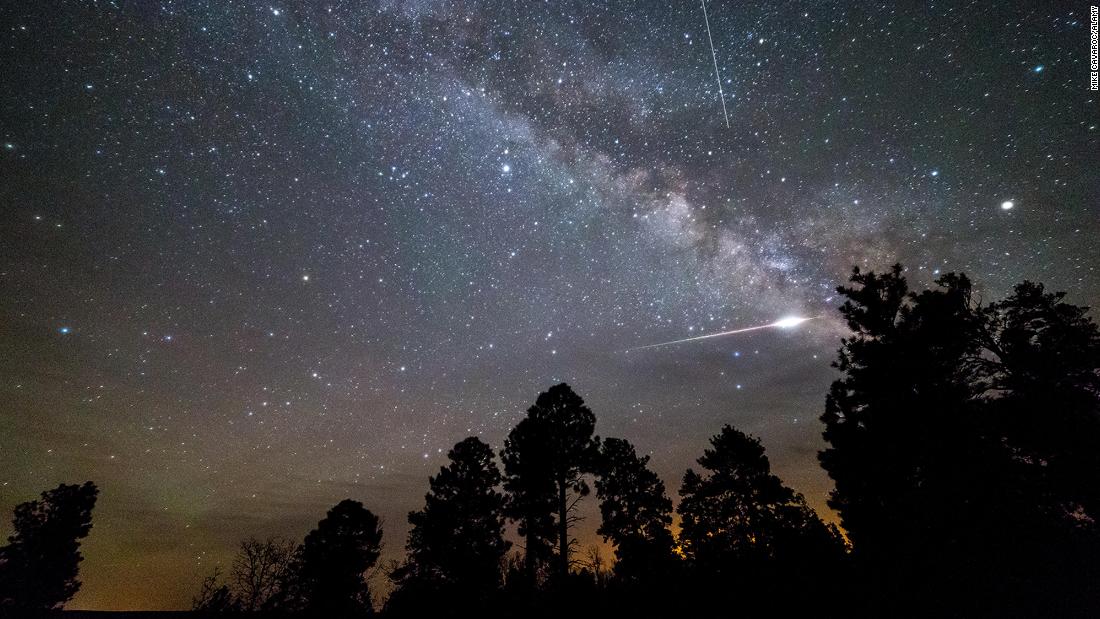[ad_1]
However, this meteor shower favors sky watchers in the southern hemisphere, where between 20 and 40 meteors can be seen each hour. In the northern hemisphere, observers can expect to see between 10 and 30 meteors in the hours before dawn.
The meteor shower is expected to peak on the mornings of May 5 and 6, but it coincides with the coming full moon, which is also a supermoon, on May 7.
However, the waxing gibbous moon is expected to set during the early morning hours this weekend, providing a better opportunity to see the meteor shower on Sunday morning.
The source of the Eta Aquariid meteor shower is Halley’s Comet. Earth crosses the comet’s orbital path each spring between April and May. This happens again in October, which creates the Orionid meteor shower.
They appear to be coming from the northeastern part of the Aquarius constellation, which contributes to the name of the shower.
If you live in an urban area, you may want to drive to a place that isn’t littered with city lights that will obstruct your view.
Find an open area with a wide view of the sky. Make sure you have a chair or blanket so you can look straight up. And give your eyes about 20 to 30 minutes to adjust to the darkness — without looking at your phone — so meteors are easier to spot.
[ad_2]
Source link




